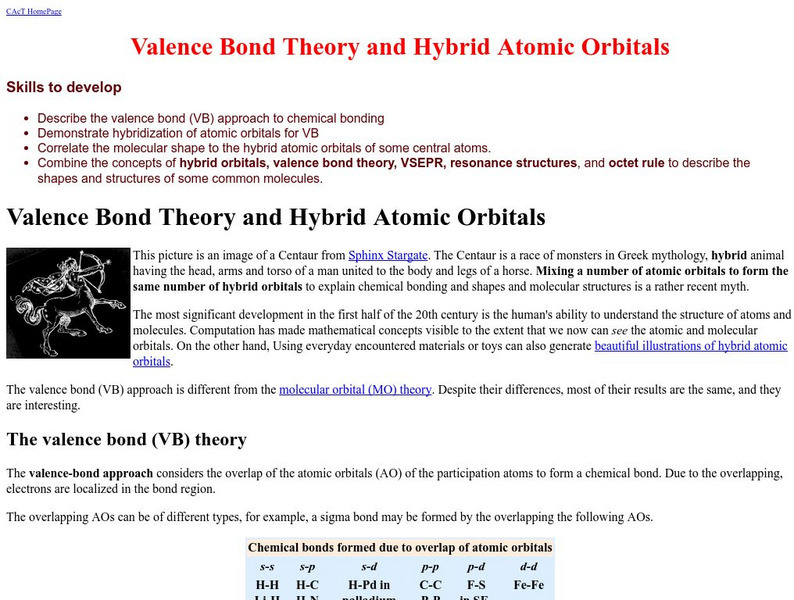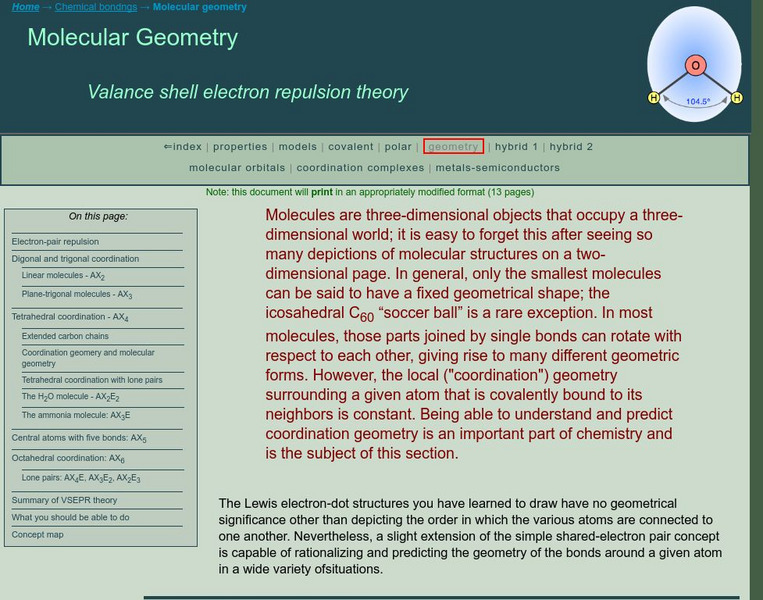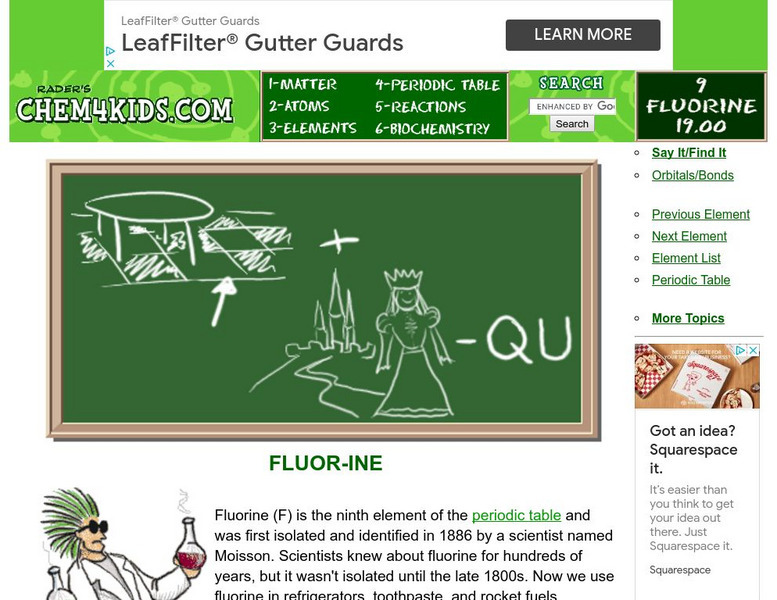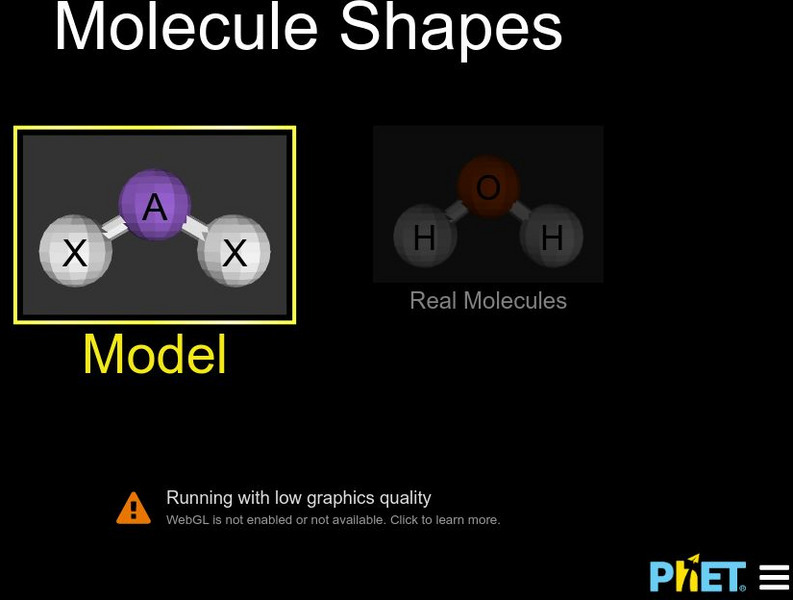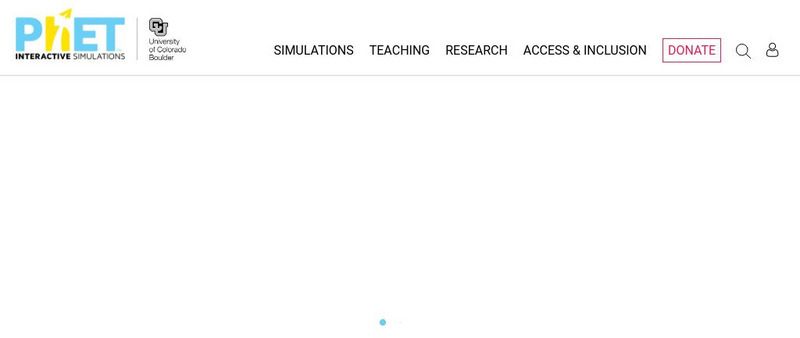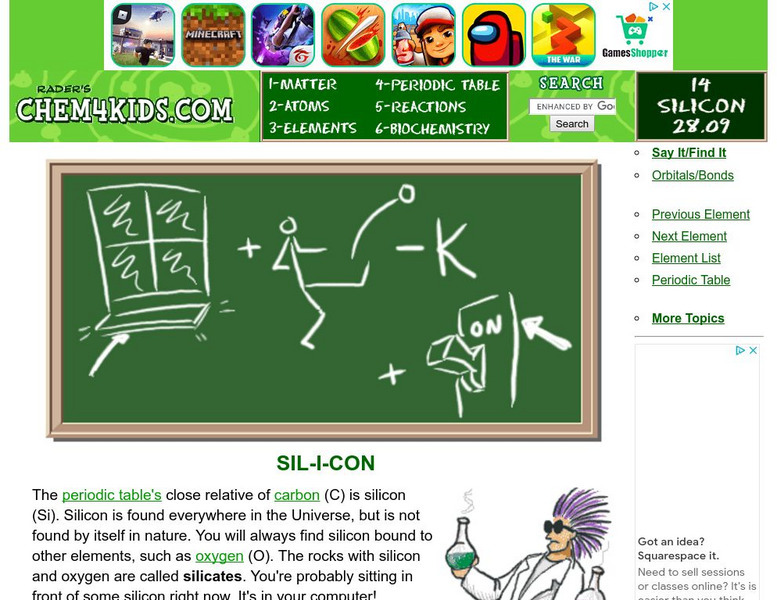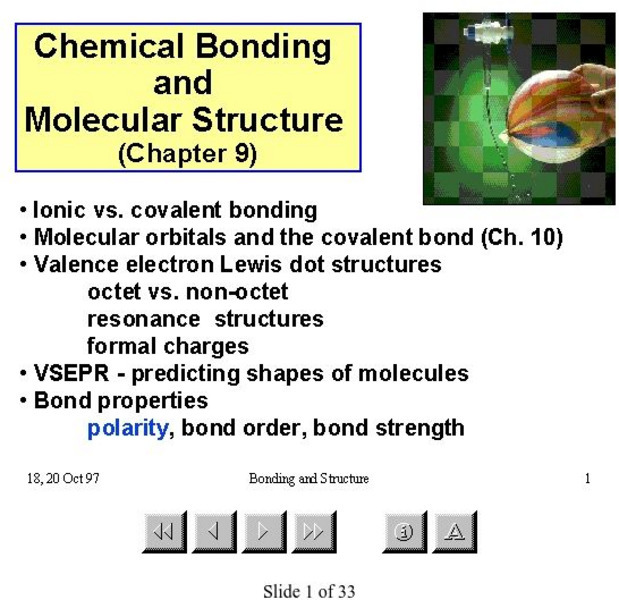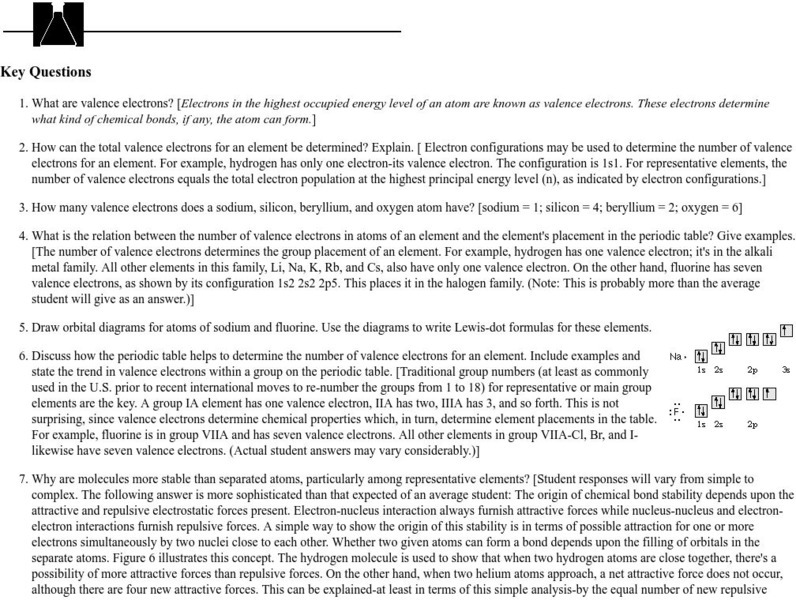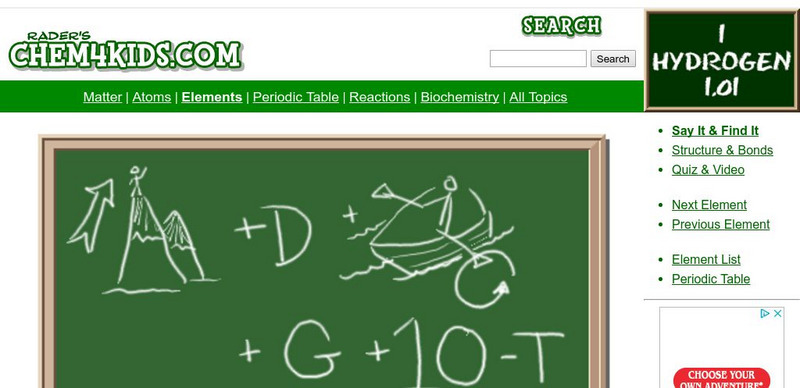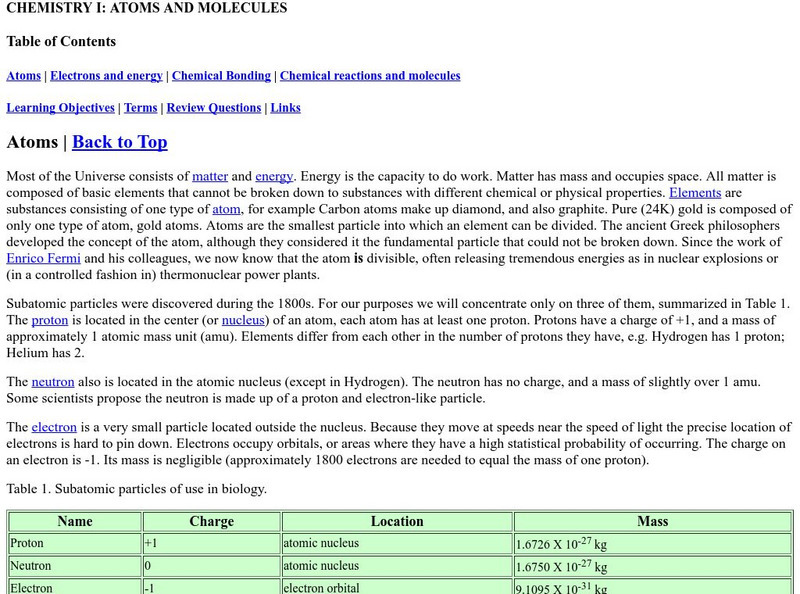University of Waterloo (Canada)
University of Waterloo: Valence Bond Theory and Hybrid Atomic Orbitals
Provides good objectives to go along with a text discussion of hybridization. Complete with illustrations, charts, and graphics.
CK-12 Foundation
Ck 12: Molecular Geometry
[Free Registration/Login may be required to access all resource tools.] In this interactive learning module, students will learn a technique to predict molecular geometry based on a molecule's Lewis electron dot structure.
Simon Fraser University
Chem1 Virtual Textbook: Molecular Geometry
An advanced explanation of the valence shell electron pair repulsion (VSEPR) theory describes specific molecular models involving digonal, trigonal, tetrahedral, and octahedral coordination, as well as central atoms with five bonds....
Chem4kids
Chem4 Kids: Fluorine
Here you can find some great information about the 9th element in the periodic table, "fluorine." Content focuses on fluorine's electrons, where you can find fluorine in nature and in the home, and how fluorine combines with other elements.
University of Colorado
University of Colorado: Ph Et Interactive Simulations: Molecule Shapes
Build a molecule in 3-D. Add single, double, and triple bonds, or a lone pair of electrons to an atom, learn what the molecule's geometric name is, see the bond angles, and manipulate each molecule to view it from all sides. Then study a...
University of Colorado
University of Colorado: Ph Et Interactive Simulations: Molecule Shapes
Explore molecule shapes by building molecules in 3D. How does molecule shape change with different numbers of bonds and electron pairs? Find out by adding single, double or triple bonds and lone pairs to the central atom. Then, compare...
National Institutes of Health
Ncbi: The Molecular Biology of the Cell: The Chemical Components of a Cell
Advanced chapter of the book "The Molecular Biology of the Cell" describes and provides illustrations of our most current understanding of the chemical makeup of cells and their components. Explains in detail how electron activity keeps...
Chem4kids
Chem4 Kids: Silicon (Si)
Here you can find some great information about the 14th element in the periodic table, "silicon." Content focuses on silicon's electrons, where you can find silicon in nature and in the home, and how silicon combines with other elements.
Chem4kids
Chem4 Kids: Sulfur (S)
Here you can find some great information about the 16th element in the periodic table, "sulfur." Content focuses on sulfur's electrons, where you can find sulfur in nature and in the home, and how sulfur combines with other elements.
PBS
Pbs Learning Media: Molecular Shapes
In this interactive activity from ChemThink, students will learn about covalent molecules and how the VSEPR theory predicts the shapes of covalently-bonded molecules.
McMaster University
Mc Master University: Molecular Structure
This PowerPoint presentation features 33 slides that explain chemical bonding and molecular shape.
Oklahoma State University
Oklahoma State University: Key Questions
A quiz on chemical bonding and valence electrons.
Curated OER
Simon Fraser University: All About Chemical Bonds
Irving Langmuir (1881-1967), chemist who won the Nobel Prize in 1932 for work on the chemistry of surfaces and monomolecular layers, and worked on the theory of electron pair bonding following N.G. Lewis.
Clackamas Community College
Clackamas Community College: Octete Rule
This resource offers a brief description of the Octet rule, along with a quick practice, and answers to the exercise.
University of California
Organic Chemistry Page: A Brief Tutorial on Drawing Lewis Dot Structures
An excellent lesson on writing Lewis structures. Examples shown include ammonium ion, carbon dioxide and the carbonate ion.
Chem4kids
Chem4 Kids: Hydrogen
Here you can find out about hydrogen, the first element in the periodic table. Content includes shell information, where to find it in nature, and why it is helpful to us.
American Chemical Society
American Chemical Society: Hompage
ChemCenter, available from the American Chemical Society, provides chemistry news, reference sources and other public services.
Estrella Mountain Community College
Online Biology Book: Chemistry I: Atoms and Molecules
In this online biology textbook, learn about atoms and molecules as they relate to life. Find out about topics such as electrons and energy, chemical bonding, and chemical reactions.
Other
Time Domain Cvd: Hybrid Orbitals and Complex Molecules
Good look at the orbital hybridization that goes along with the different arrangements of electron clouds. Solid information and graphics.
Chiral Publishing
Chiral Publishing: An Introduction to Chemistry: Molecular Structure: Audio Book
This audio book, narrated by Mark Bishop, describes the formation of covalent bonds. Lewis dot structures help highlight the valence electrons used to determine which bonds form. Also find links to animations and tutorials about other...
Other
Monterey Peninsula College: Molecular Orbital Theory
Very deep presentation of molecular bonding and orbital theory. Nice graphics and text make it a good presentation of some high end material.
CK-12 Foundation
Ck 12: Plix Series: Resonance: Ozone Resonance
[Free Registration/Login Required] Explore resonance by manipulating the electrons and bonds, and then answer a challenge question about the concept.
State University of New York
State University of New York: Drawing Lewis Structures
The following simulation contains partially completed Lewis structures and students are required to complete them by dragging bonds and lone electron pairs to their appropriate positions.
Children's Books Online
Children's Books Online: Tales of Little Cats
"Tales of Little Cats", written circa 1890 by Carrie Jacobs-Bond, has been digitized and made available by the Rosetta Project. This 20 page book is appropriate for pre-readers.
